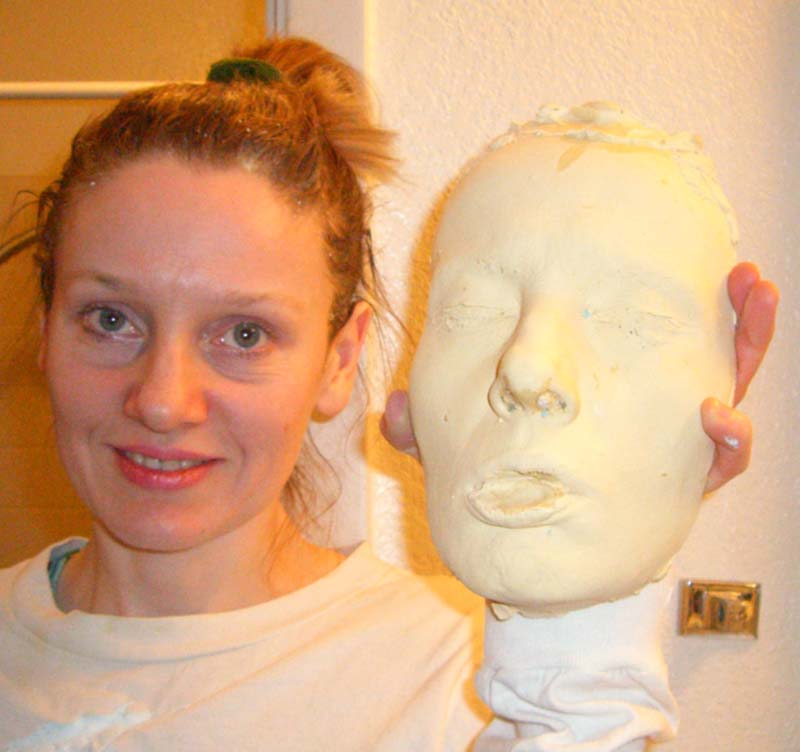Face casting, February 2007: friends make an alginate and plaster cast of my face
My friends M and P used to make plaster masks based on real human faces. They would first make a cast of a person’s face from alginate, a gooey material that captures the shape of your facial features to a tiniest detail. On its basis they would make an actual mask out of plaster.
One day they made a cast of my face. The process is documented here step by step.
First, M prepared a cardboard frame with a face-shaped hole in it. Then she made the hole fit snugly around my face by putting weatherstripping around its sides.
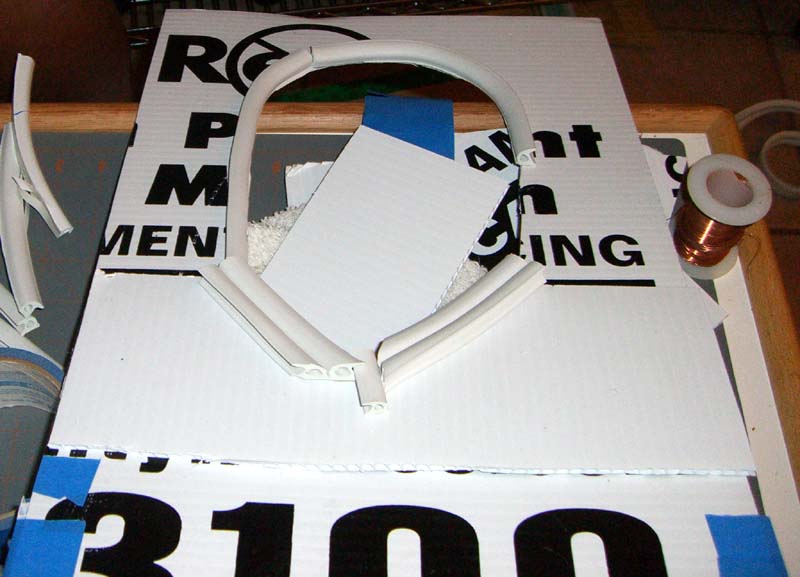
P with a saw that he says can cut through hard foam. He wants to use it to make sculptures or some kind of art objects, he just doesn’t know what exactly.
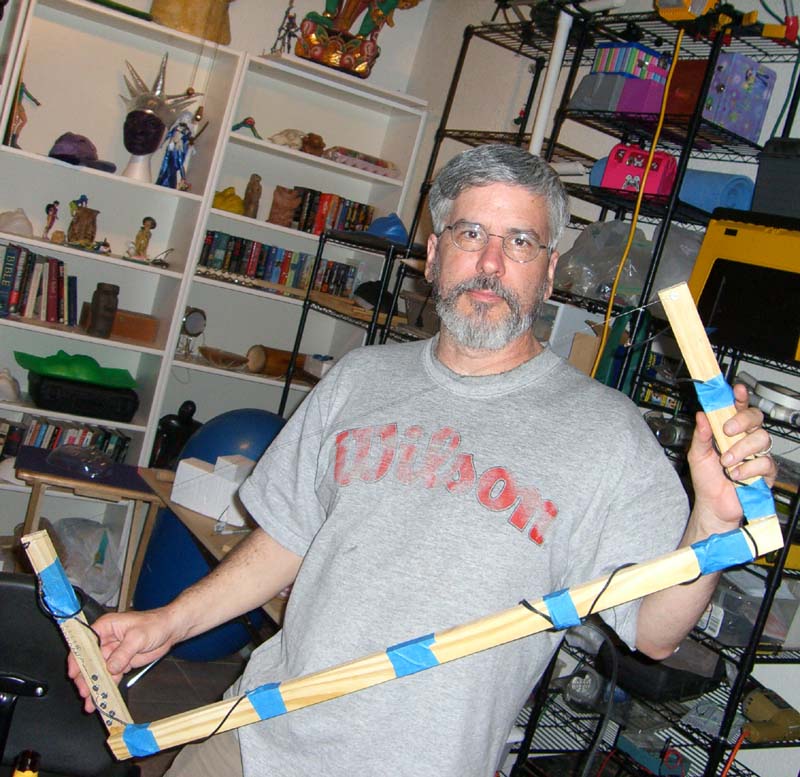
Me in a face casting frame. The snug fit of the frame around my face probably helped to prevent alginate from running off onto my hair and neck.
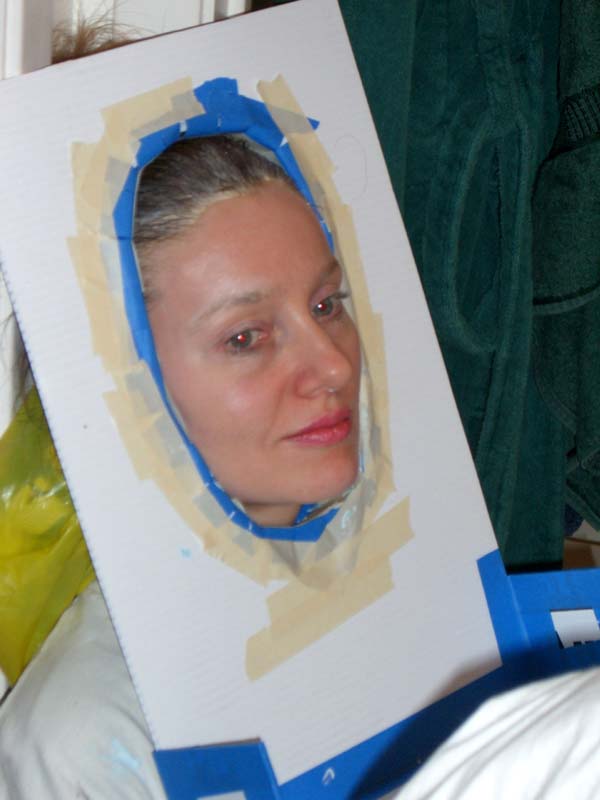
Prepped for application of alginate. M applied conditioner on my face to keep alginate from sticking to my hair, eyebrows and eyelashes. The straws are in my nose so that I could breathe when M covers my face with alginate and then plaster. This, however, didn’t work very well, because I can’t breathe through my nose. So she also gave me a tube to put in my mouth so I could breathe. This caused the mask to have an odd, gaping facial expression, but what can you do.

P and M warned me to keep a pleasant expression of face as they put alginate on my face, because alginate picks up even the tiniest details of your skin texture; so if you wrinkle your forehead or scrunch your eyes, it will all be reflected in your mask. Regardless, it’s pretty hard to keep your face relaxed when your eyes are being glued shut by thick goop that’s being heaped on your eyelids. I could not help but scrunch my eyes. As we’ll see later, my face cast turned out to be a bit of a disaster.

Below, my face is now completely covered in alginate. I must say, having your eyes and mouth glued shut induces a bit of a claustrophobic feeling in you. But not so bad as to not be able to get through it. With more practice it may get easier.
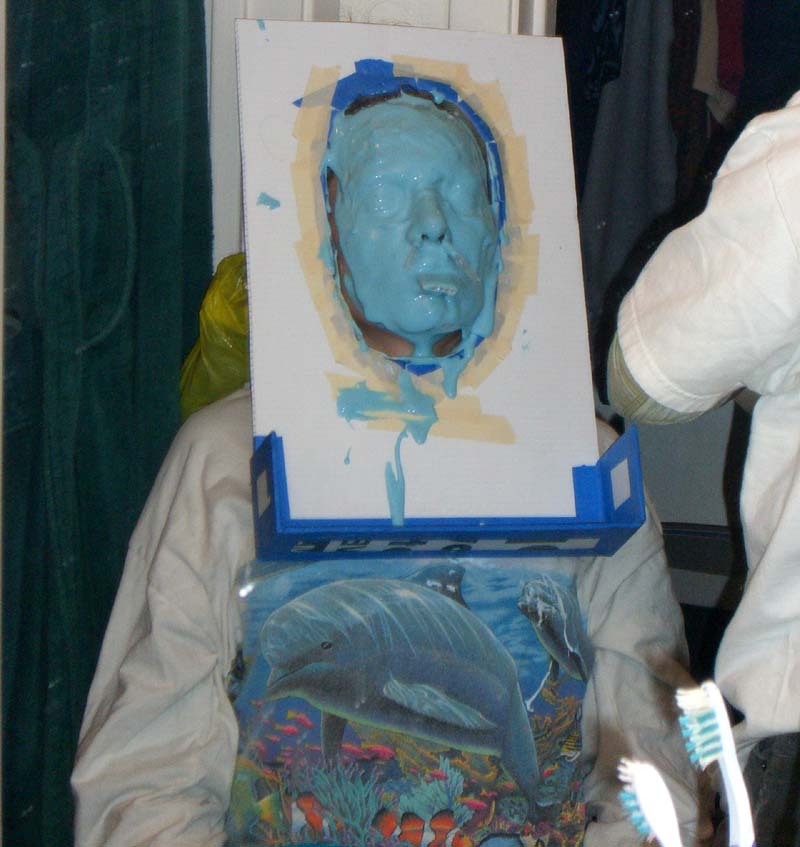
Me covered in alginate, up close. This thing protruding from my mouth is a piece of corrugated cardboard that allows me to breathe through my mouth during the process. Normally, M would put straws in the “model’s” nostrils for breathing, but I can’t breathe through my nose, so I had to use this. However, it kind of ruined the cast: the mask turned out to have a weird gaping expression.
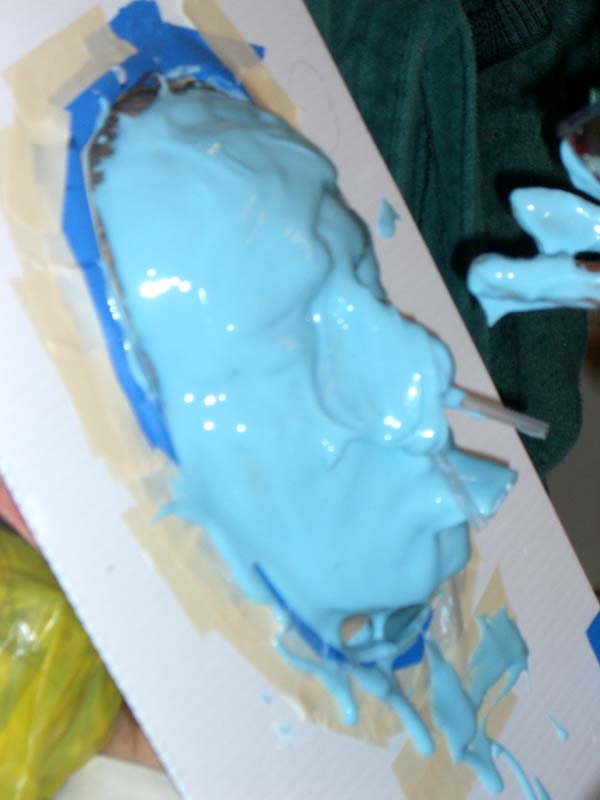
Once the alginate (the blue layer) sets, M starts to apply plaster on top of it.
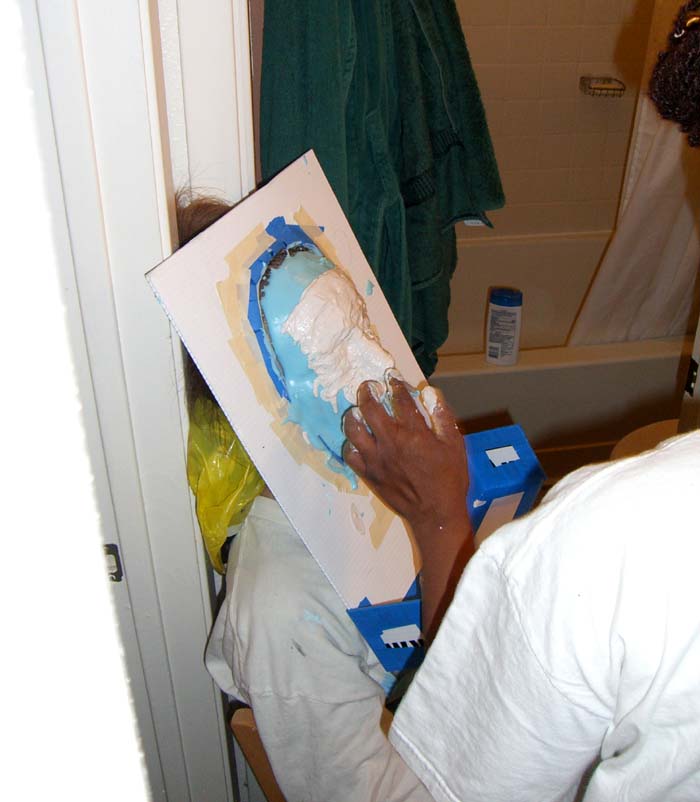
M (the person who did the casting) and I are reflected in the mirror of the bathroom where the casting took place.

M applies plaster to my face (on top of alginate, that is). The more plaster is applied, the heavier the mask feels, since plaster is heavier than alginate; also, while a layer of alginate on your face still lets you see the light in the back of your eyelids, plaster shuts the light out completely, and you are left sitting in total darkness. It intensified the claustrophobic feeling in me a little bit. Fortunately, the darkness / heaviness increases gradually, so you have time to adjust to it.

I’m totally “plastered” now.
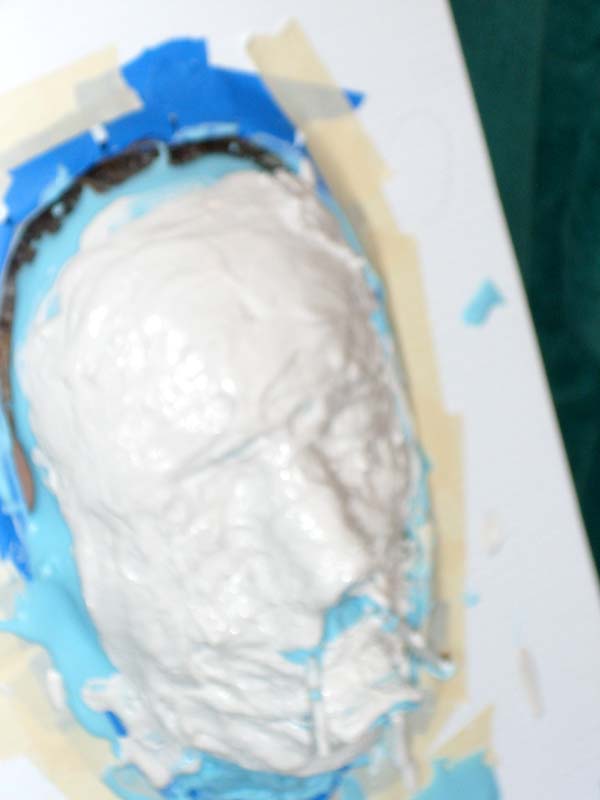
This is the finished mold of my face after I peeled it off of me. The funny thing is, you are looking at the concave side of the mold, even though it appears convex to you. The blue stuff is alginate, which is the inner layer of the mold, but it looks as if it’s on the outside. It’s an optical illusion. Another example of it can be seen in the picture of my friend P holding a mask.
It’s odd that my eyes look open in this mold, though I kept them closed the whole time — you definitely don’t want alginate getting in your eyes.
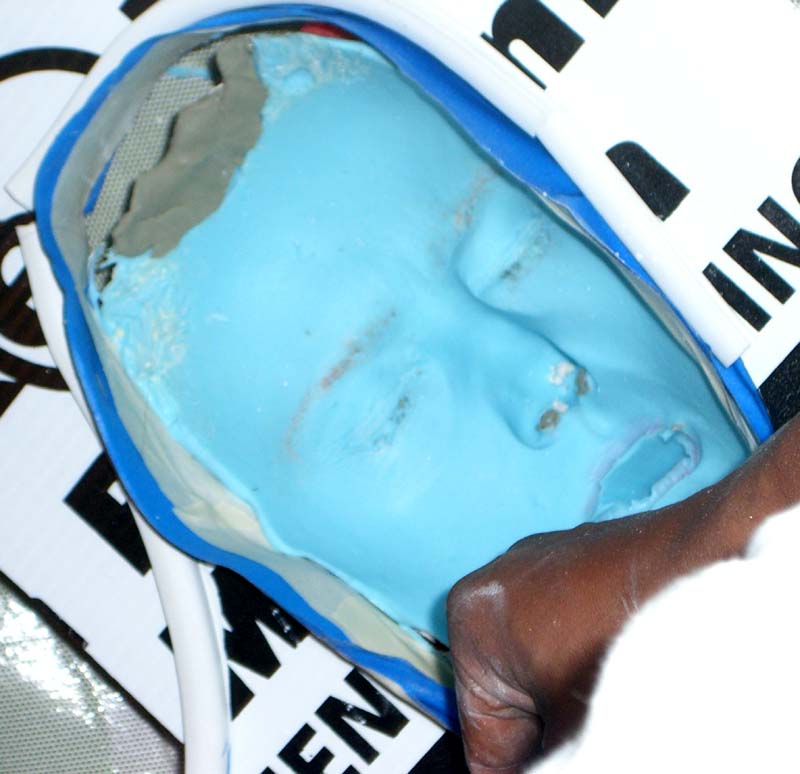
The finished mold in profile
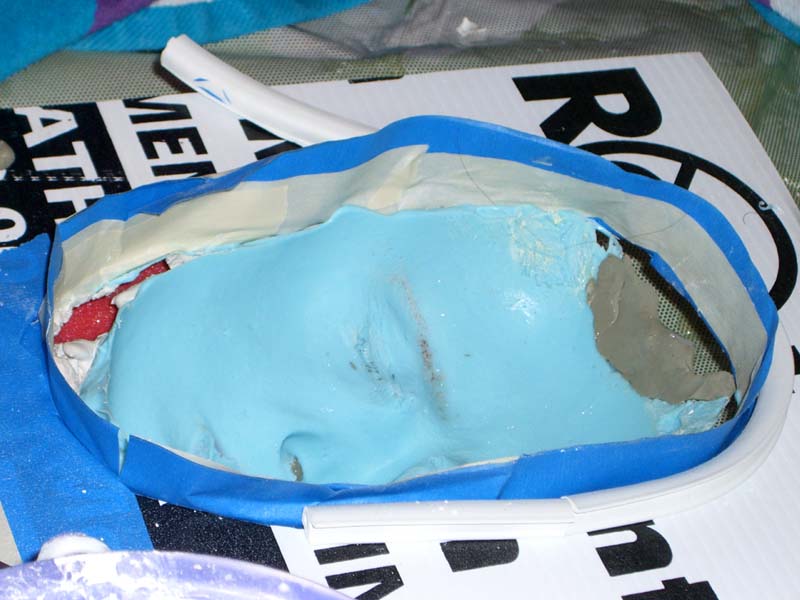
M mixes water putty with a power drill paint-mixing attachment, while the mold of my face looks on. (Again, it’s the concave side, but it looks as if it’s peeking out of the frame.)
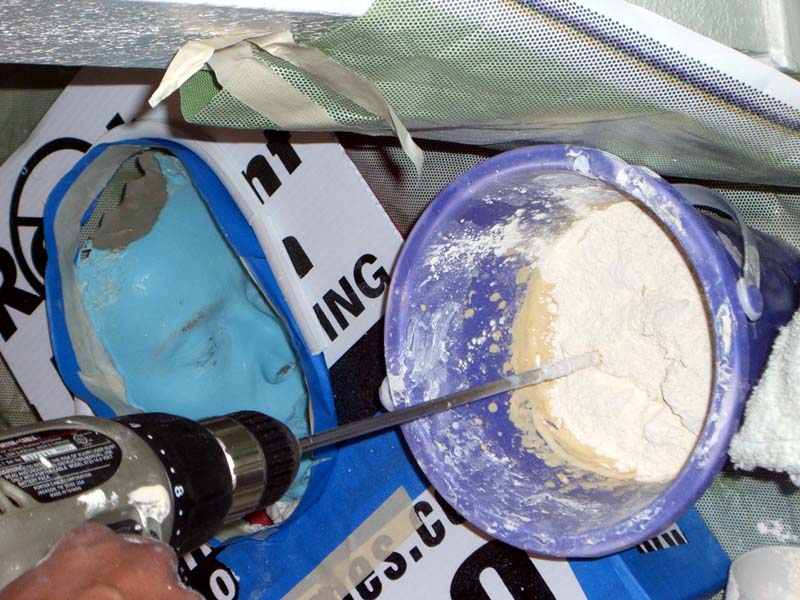
M pours water putty into the mold

The underside of the cast with a hook (for hanging it on a wall, if one so wishes), and M’s and P’s signatures.
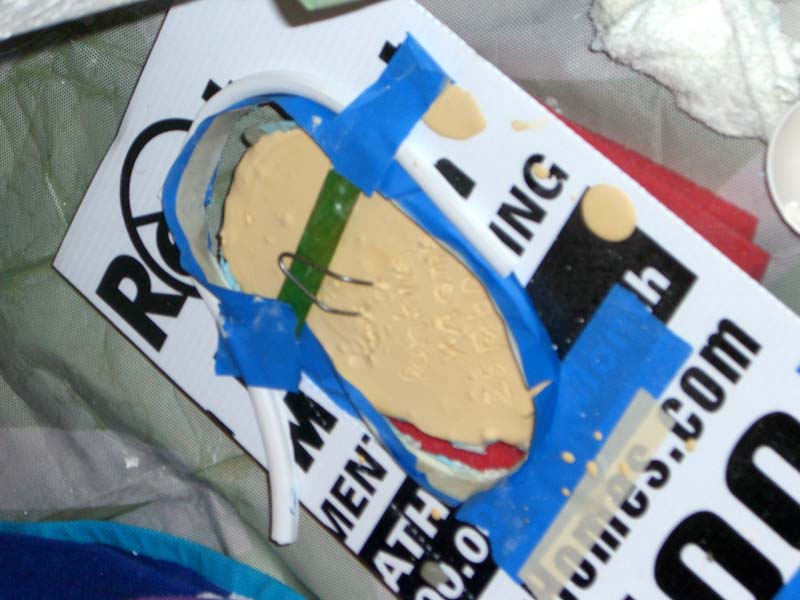
Voila! This is the cast of my face. As one can see, my eyes are scrunched and I look like I’m about to vomit. This facial expression is due to the mouthpiece I was holding in my mouth for breathing. We concluded it was way too big. To preserve a natural shape of a person’s lips, a much, much smaller, discrete mouthpiece would be needed. The best thing, of course, would be to go without it and just breathe through the straws in the nose, which is what P and M did when they made casts of each other’s faces. I can’t breathe through my nose for long periods of time, so I needed this. It looks like I’m probably not a good candidate for a face-casting model.
The scrunching of the eyes is, of course, due to the fact that it’s really hard to keep a relaxed facial expression when thick goop is being poured on your eyes, nose and mouth — and gluing all facial orifices shut! The instinct that screams “I’m being buried alive!” in your head is pretty hard to shut up.
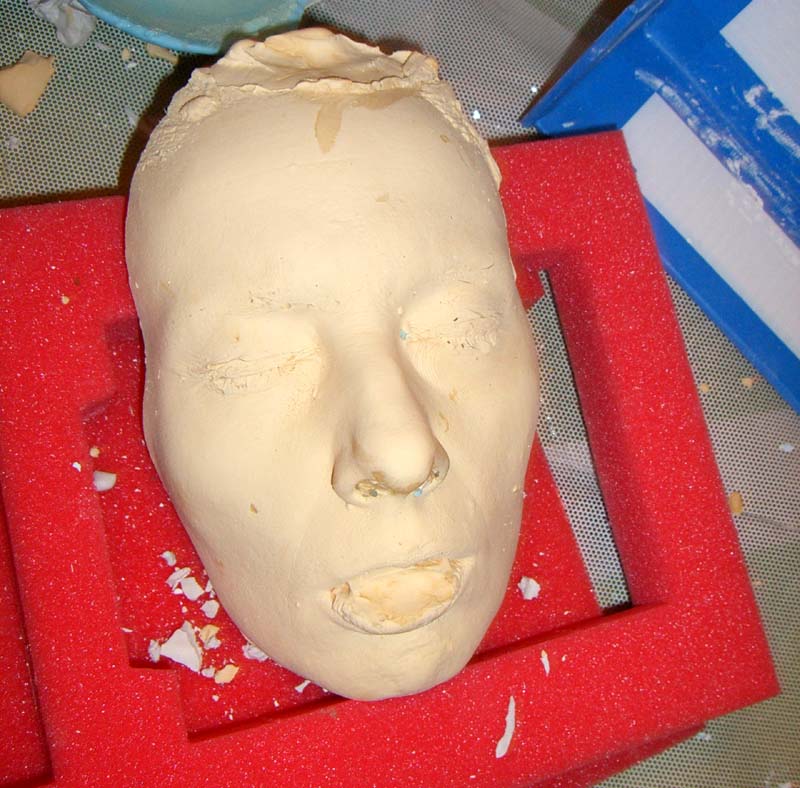
Me and my cast: do we look alike?
